
Health Technology on the Fast Track in Finland and Across Europe
Healthcare is undergoing a fundamental transformation as artificial intelligence and large language models surge into consultations, diagnostics, and administrative tasks. In Finland, AI is being increasingly utilised in areas such as cancer diagnostics and brain imaging.

Martti Asikainen & Elisa Laatikainen 3.6.2025

The healthcare sector currently faces particular challenges from an ageing population, continuously rising healthcare costs, and the worsening shortage of healthcare workers. However, these global challenges create significant opportunities for Finnish expertise, particularly in developing digital and AI-based solutions. The domestic market is quite limited, which means growth-oriented companies must necessarily turn their attention to international healthcare markets.
Finland’s strong technological expertise and high-quality health technology provide excellent foundations for conquering international markets and increasing export revenues sustainably. In Finland, this has been evident over several years as strong product export growth, particularly to Germany, China, and the United States (Hassinen 2024). However, increasing exports requires determined investment in international networks, securing financing, and developing regulatory expertise.
AI is not new to medicine. On the contrary, it has been used for decades – but never on the current scale. Advanced AI applications, algorithms, and data analytics offer unprecedented opportunities for healthcare and medical use, as processing vast amounts of data becomes easier and decision-making accelerates. Implementation requires careful ethical principles, but nevertheless its potential to alleviate resource shortages and improve access to care is undeniable.
Efficiency and Quality
AI is expected to improve both efficiency and quality. Changes are reflected above all in health technology devices and applications, which suggests that the sector will experience massive upheavals over the next decade. AI applications today extend from diagnostics to health data analysis, administrative tasks, and device testing. It can automate routine tasks, improving access to care by offering more personalised and affordable services whilst speeding up information flow within healthcare (Oikarinen 2023).
The biggest questions regarding new technologies relate to ethics and accuracy. However, studies suggest that AI can be even more empathetic than human doctors in individual tasks. In a cross-disciplinary study conducted in the United States in 2023, an AI chatbot was found to produce higher-quality and more empathetic responses to patients’ questions. In researchers’ evaluations, 45% of AI responses were rated as empathetic, whilst for remote doctors the figure was 4.6%. AI responses were also rated as medically superior (Ayers et al. 2023).
One of AI’s most promising application areas is medical imaging. CT and MRI scans can produce hundreds of images, and in some cases key details may be difficult to spot in greyscale images. AI-based systems can support specialists by extensively analysing image material and identifying potential findings. This can increase accuracy and speed up work. (Ge et al. 2022)
AI applications have also been found to identify abnormalities in stroke patients’ brain scans up to twice as accurately as professionals in the field. An application developed by Imperial College London and the University of Edinburgh was trained on imaging data from 800 stroke patients and tested on 2,000 patient cases with excellent results (Marcus et al. 2024). Particularly significant for AI is its ability to determine the timing of a stroke, which is crucial for treatment, as for example in treating strokes caused by blood clots, the first 4.5 hours are critical because both medical and surgical treatment remain possible (Rey 2024).
Additionally, AI has demonstrated its usefulness in identifying bone fractures. According to British statistics, A&E doctors miss up to 3-10% of fractures, and there is a severe shortage of radiographers (Roxby 2024). According to the National Institute for Health and Care Excellence (NICE), the solution is to harness AI to work alongside specialists. According to NICE, the technology is safe and reliable, and can speed up diagnosis whilst significantly reducing the need for follow-up visits, thereby lightening the burden on clinicians drowning in pressure (Roxby 2024; North 2025).
Promising cases from Finland
Finland also has numerous promising cases where AI has been harnessed to serve medicine and healthcare. A good example is Aiforia, a growth company that listed on the Helsinki Stock Exchange in 2021, whose deep-learning AI software identifies different forms of cancer from pathological samples, based on which the software compiles a report for pathologists to make diagnoses (Erkkilä 2024; Leinonen 2025). Later research and development work have further improved Aiforia’s cloud-based AI model, enabling its applications to be extended to different classifications (Saft 2025).
AIATELLA, a client of Finnish AI Region (FAIR), also serves as a good example. The rapidly growing startup develops cloud-based software solutions for automatic analysis of medical imaging. The system processes both magnetic resonance images and computed tomography scans. The company’s developed technology is specifically targeted at diagnosing cardiovascular diseases based on CT, MRI, and ultrasound images. The AI model utilises extensive datasets, making analyses reliable and enabling accurate anomaly reporting for healthcare professionals. The application has successfully passed tests in the UK’s National Health Service (NHS). (Laatikainen 2024).
Conclusions
AI integration into health technology is progressing rapidly and fundamentally changing both medicine and healthcare. Studies and practical applications show that AI-based solutions can significantly improve diagnostic accuracy, streamline treatment processes, and even increase patients’ experienced empathy. Particularly promising results have been achieved in imaging diagnostics. At the same time, AI enables automation of routine tasks, freeing up healthcare professionals’ time for more demanding tasks and potentially alleviating the sector’s resource shortage.
Whilst traditional language models do not yet offer sufficiently accurate answers to medical questions, search-assisted systems clearly indicate the direction of development. Finnish innovations, such as Aiforia and AIATELLA, serve as examples of how AI can be harnessed for practical healthcare applications. However, broader implementation of AI requires careful ethical consideration and ensuring reliability.
This article was published as part of the AI Health project coordinated by Haaga-Helia University of Applied Sciences.

Martti Asikainen
RDI Communications Specialist, AI Educator
+358 44 920 7374
martti.asikainen@haaga-helia.fi
Haaga-Helia University of Applied Sciences

Elisa Laatikainen
Project Specialist, Customer Manager
+358 294471359
elisa.laatikainen@haaga-helia.fi
Haaga-Helia University of Applied Sciences
References
Ayers, J. W., Poliak, A., Dredze, M., Leas, E. C., Zhu, Z., Kelley, J.B., Faix, D.J. Goodman, A.M., Longhurst, C.A., Hogart, M. & Smith, D.M. (2023). Comparing Physician and Artificial Intelligence Chatbot Responses to Patient Questions Posted to a Public Social Media Forum. Jama Intern Med. 2023, 183(6), s. 589–596. American Medical Association. Chicago.
Erkkilä, J. (2024). Tekoäly-yhtiö Aiforia kasvaa vauhdilla. Published in Salkunrakentajat on 1.9.2024. Helsinki. Accessed 1.5.2025.
Flotte, T., Derauf, S., Byrd, R., Kroneman, T., Bell, D., Stetzik, L., Lee, S-Y., Samiei, A., Hart, S., Garcia, J., Beamer, G. & Westerling-Bui, T. (2025). Democratizing Artificial Intelligence in Anatomic Pathology. Arch Pathol Lab Med, 2025, 149 (1), s. 55–59. College of American Pathologists. Northfield.
Ge, Y., Zhang, Q., Sun, Y., Shen, Y., Wang, X. (2022). Grayscale medical image segmentation method based on 2D&3D object detection with deep learning. BMC Medical Imaging. https://bmcmedimaging.biomedcentral.com/articles/10.1186/s12880-022-00760-2
Hassinen, S. (2024). Terveysteknologian tuotevienti edelleen ylijäämäistä. Published on Healthtech Finland’s website on 17.9.2024. Helsinki. Accessed 2.5.2025.
Laatikainen, E. (2024). Näkymätön silmälle – tekoäly mullistaa lääketieteellisen kuvantamisen. Published on Finnish AI Region’s website on 6.2.2024. Helsinki. Accessed 1.5.2025.
Leinonen, A. (2025). Analyysi: Aiforia avaa ovia hyväksynnöillä ja kumppanuuksilla. Published in Salkunrakentajat on 4.4.2025. Helsinki. Accessed 1.5.2025.
Marucs, A., Mair, G., Chen, L., Hallett, C., Cuervas-Mons, C.G., Roi, D., Rueckert, D. & Bentley, P. (2024). Deep learning biomarker of chronometric and biological ischemic stroke lesion age from unenhanced CT. npj Digit. Med. 2024, 338(7). Nature Portfolio. London.
North, M. (2025). 6 ways AI is transforming healthcare. Published on World Economic Forum’s website on 14.3.2025. Cologny. Accessed 1.5.2025.
Oikarinen, T. (2023). Tekoäly tulee – olemme valmiina. Published on Terveystalo’s website on 14.11.2023. Accessed 1.5.2025.
Rey, S. (2024). New AI stroke brain scan readings are twice as accurate as current method. Published on Imperial College London’s website on 6.12.2024. Imperial College London. London. Accessed 1.5.2025.
Roxby, P. (2024). AI to help doctors spot broken bones on X-rays. Published on BBC’s website on 22.10.2024. London. Accessed 1.5.2025.
Saft, L., Vaara, E., Ljung, E., Kwiecinska, A., Kumar, D. & Timar, B. (2025). A deep-learning algorithm (AIFORIA) for classification of hematopoietic cells in bone marrow aspirate smears based on nine cell classes—a feasible approach for routine screening?. J Hematopathology 2025, 18(12). Springer Nature. London.


Finnish AI Region
2022-2025.
Media contacts